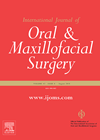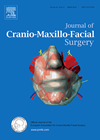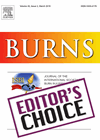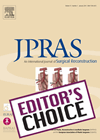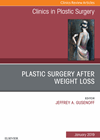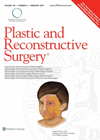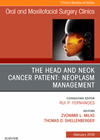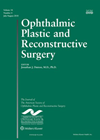
Journal Reviews archive for 2019
Soft tissue changes following maxillary osteotomy, comparison of three computer programmes
This small group of seven patients had a Le Fort I advancement maxillary osteotomy with vertical repositioning and alar base cinch sutures. They were assessed with cone beam CTs three months preoperatively and one year postoperatively. A clinical comparison between...
Lymph node ratio in tongue cancer
This is an analysis of 88 patients treated in Switzerland between 2003 and 2012. All patients had a selective neck dissection and recurrence occurred in 25 patients. Overall and disease specific survival were 72% and 80%. They specifically looked at...
Infection in prosthetic temporomandibular joints
This is an overview from an internationally recognised temporomandibular joint (TMJ) surgeon. It is a comprehensive article highlighting that incidence is likely to be underestimated and prevention the main objective. Not surprisingly a lot of the conclusions are based on...
Temporary tracheostomies are not always necessary for head and neck free flap reconstruction
Complex head and neck cancer cases with reconstruction can be challenging due to the risk of loss of airway. Temporary tracheostomies are often used to protect the airway following complex oral and maxillofacial ablative surgery and reconstruction. However, while this...
Comparison of intralesional verapamil versus intralesional corticosteroids in treatment of keloids and hypertrophic scars
This paper by Abedini et al., is a randomised observer blinded controlled trial comparing the efficacy, safety profile, and recurrence rates of intralesional verapamil versus intralesional triamcinolone acetonide in the treatment of keloid and hypertrophic scars. Whilst corticosteroids represent the...
A single blinded RCT comparing triamcinolone with 5-FU treatment for keloid scars
This single blinded randomised controlled trial (RCT) compared 43 patients with 50 symptomatic keloids were were randomised to two matched groups of 25 scars, receiving either flurouracil (5-FU) or current first-line treatment, triamcinolone (TAC). The surgeon administering the injectable treatments...
Note from the Editor
In 2005 I wrote a paper with my colleague Linda Huang which looked at keloid and hypertrophic scars from a rather different perspective (Burd A, Huang L. Hypertrophic response and keloid diathesis: two very different forms of scar. Plast Reconstr...
Massive weight loss abdominoplasty with novel technique of umbilicus reconstruction
This paper provides a description of the authors’ technique and thoughts on fleur de lys abdominoplasty including a technique of fashioning of the neo-umbilicus within the vertical scar. It contains good operative and postoperative photographs. The authors starting with the...
A useful guide for performing non-surgical rhinoplasty
This study details a single-centre, nonrandomised, prospective trial of 150 consecutive patients undergoing non-surgical rhinoplasty using hyaluronic acid fillers. The study’s aim was to develop an injecting protocol for different anatomical anomalies to achieve consistent results. Virgin noses and previously...
Perioperative management of the head and neck cancer patient
The perioperative care of patients with head and neck cancer is complex and requires significant preoperative planning and patient education. The issues include analgesia, antibiotics, stoma and wound care, general and chest physiotherapy, thromboprophylaxis and nutrition. This article provides a...
Combined Vismodegib and Mohs surgery
This is a report of eight patients with locally advanced periocular basal cell carcinoma who were treated with Vismodegib prior to Mohs micrographic surgery. The rationale for the combined treatment plan was that long-term Vismodegib is poorly tolerated due to...
Lacrimal gland carcinoma outcomes
This is retrospective review of outcomes of lacrimal gland epithelial tumours treated between 1972 and 2014 at Moorfields Eye Hospital. Seventy-nine patients were reported, comprising 53 adenoid cystic carcinomas, 15 primary adenocarcinomas and 11 carcinomas ex-pleomorphic adenoma. The authors compare...

